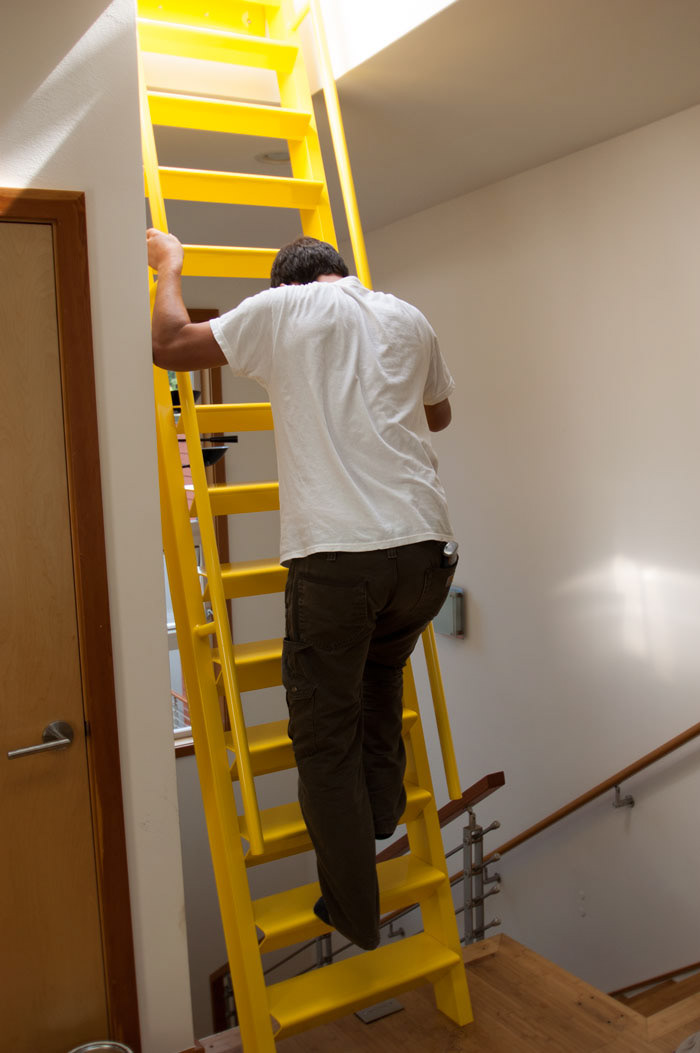When it comes to ascending to higher levels on ships and industrial settings, ships ladders emerge as the ingenious solution for vertical access. These unique and space-saving ladders are designed to efficiently navigate tight spaces, providing safe and sturdy passage between different levels. Their practical design and versatility make ships ladders an essential feature on ships, as well as in various industrial and commercial environments. In this article, we delve into the world of ships ladders, uncovering their features, applications, and the reasons behind their widespread usage.
The Origins of Ships Ladders
Ships ladders have a fascinating history that dates back to centuries ago. They were originally developed for use on ships, hence the name, to provide a reliable means of accessing different decks and levels while conserving valuable space onboard. Over time, their practical design and space-saving benefits led to their adaptation in various industrial settings and buildings with limited space.
Space-Saving Design
One of the standout features of ships ladders is their space-saving design. Unlike traditional straight ladders, ships ladders utilize alternating tread steps, which are shorter in depth and steeper in angle. This innovative design allows ships ladders to navigate vertical spaces with minimal footprint, making them ideal for tight quarters where space is at a premium.
Safety and Stability
Safety is of utmost importance when it comes to any ladder, and ships ladders are no exception. Despite their steep angle, ships ladders are engineered to provide stable and secure footing for users. The incorporation of handrails on both sides enhances safety, providing users with support and stability as they ascend or descend.
Versatility in Application
Ships ladders are not limited to maritime use; they have found their way into various industrial and commercial settings due to their versatility. They are commonly used in manufacturing facilities, warehouses, and factories, where space constraints demand efficient vertical access solutions. Ships ladders also find application in architectural and construction projects, providing a practical solution for accessing rooftops, mezzanines, and elevated platforms.
Material and Construction
Ships ladders are typically constructed using durable materials such as aluminum or steel, ensuring their resilience in demanding environments. Aluminum ships ladders offer the advantage of being lightweight and corrosion-resistant, making them suitable for both indoor and outdoor use. On the other hand, steel ships ladders provide superior strength and durability, making them ideal for heavy-duty applications.
Compliance with Safety Standards
To ensure user safety, ships ladders are designed to comply with safety standards and regulations. Manufacturers adhere to guidelines such as the Occupational Safety and Health Administration (OSHA) requirements, ensuring that ships ladders meet the necessary criteria for safe and reliable use.
Customization for Specific Needs
Ships ladders can be customized to suit specific needs and requirements. They are available in various sizes, heights, and configurations, allowing them to be tailored to the unique spatial constraints of each environment. Customization ensures that ships ladders provide optimal functionality while maximizing space efficiency.
Maintenance and Longevity
Maintaining ships ladders is a straightforward task. Regular inspections for signs of wear, along with routine cleaning, are usually sufficient to keep them in optimal condition. The durable construction of ships ladders, whether in aluminum or steel, contributes to their longevity, providing a cost-effective access solution for the long term.
Ships ladders exemplify innovation and efficiency in vertical access design. With their space-saving layout, safety features, and versatility, they have become essential components in various industrial, commercial, and maritime settings. From ships to warehouses, manufacturing facilities to architectural projects, ships ladders navigate vertical spaces with ease and reliability. Their ingenious design and practicality make them an indispensable tool for accessing different levels, ensuring smooth navigation between decks and elevated platforms, and enhancing safety and efficiency in tight quarters.

